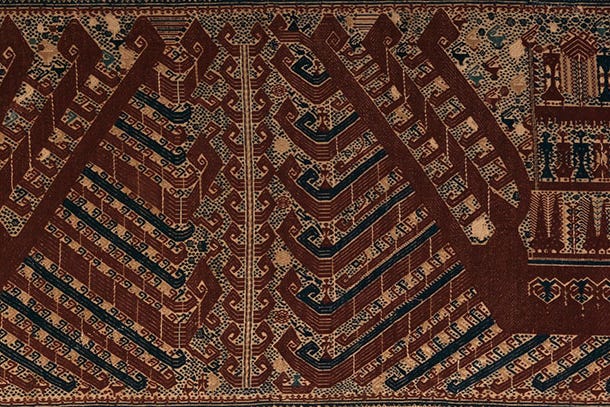Ceremonial cloth (‘tampan’) (detail), mid-19th century, Indonesia, Sumatra, Cotton; supplementary-weft weave, 41 x 35 in. (104.1 x 88.9 cm). Fine Arts Museums of San Francisco, Gift of Wells Fargo Bank, 1987.37.1
The Sumatran Ship Cloth
The Sumatran Ship Cloth presents three ceremonial textiles from the Lampung region of south Sumatra, a region of Indonesia where ship imagery is a prominent theme in woven arts. For many Indonesians, the sea represents their lifeblood, and ship imagery reflects social structures, rituals, and cosmological beliefs. These textiles from the Museums’ permanent collection, dating from the 19th and 20th centuries, are being shown for the first time.
The display represents two of the major categories of ship cloths: the palepai and the tampan. The palepai is considered the pinnacle of Indonesian weaving, both within Lampung society and by Western collectors. Once owned exclusively by Sumatran aristocrats, the expansive cloths were hung for display at significant occasions such as engagements, marriages, births, and funerals. The more omnipresent tampan cloths were a part of all rites of passage in Lampung, when dozens would be exchanged between relatives, often being used to wrap food or other gifts.
This exhibition highlights a major acquisition from 2010 of a two-red-ship palepai. This work, measuring nearly 11 feet long, was likely used in an aristocratic marriage ceremony, with each of the two red ships representing a clan. Its rich color palette, combined with the intricate execution of the fine details, makes this an exceptional example.




